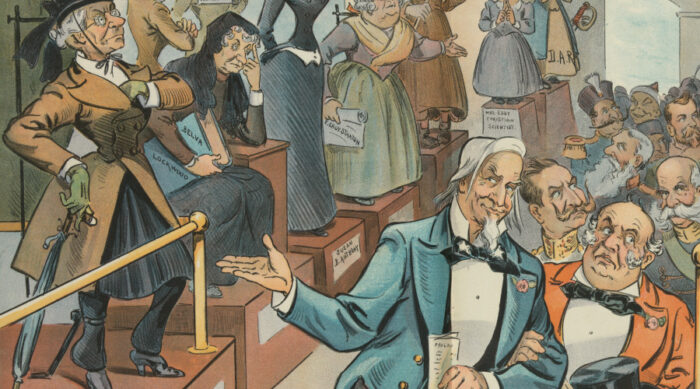I recently reviewed a new book on women’s history, and noticed that there were a couple of people that I had so far only referenced in passing, despite their strong Capitol Hill connections. Chiefly among these was Belva Lockwood, who is best known for being the first woman to run for President of the United States. Victoria Woodhull also claims this mantel, but she was not old enough to serve as President at the time that she ran, making her attempt all the more futile.
Lockwood was born Belva Ann Bennett in New York State, and was a school teacher by age 14. After marrying, having a daughter, and becoming a widow by age 23, she realized that further schooling was her only hope for advancement. She attended Genesee College, graduating in 1857 and became headmistress of a nearby school, spending the next almost 10 years in similar positions across New York.
In 1866, she moved to Washington D.C. and opened her own school. Two years later she would marry Ezekiel Lockwood, who worked variously as a preacher, dentist, and notary public. In 1870, Belva Lockwood applied to various law schools, but was denied entry due to her sex. Eventually, the relatively new National University School of Law (which many years later merged into George Washington University School of Law) admitted her, though it required the intervention of President Ulysses Grant to make them give her the diploma she earned in 1873.

Lockwood soon became a valued member of the bar and argued some high profile cases, including when she sued Hallet Kilbourn for non-payment of the food he had consumed while incarcerated in the District Jail.
After practicing the required three years, Lockwood applied to the Supreme Court Bar, but was denied. It was only in early February, 1879 that a law passed Congress that allowed women to become members of that bar. On March 3, 1879, Lockwood presented herself at the Supreme Court. After waiting for hours, first for that day’s cases to be heard, then for other, male, applicants to be admitted, it was Lockwood’s turn. The Washington Post, which had already spent several sentences describing her attire, wrote what happened next:
Then Mr. A. G. Riddle, the attorney for the District, who had been sitting by Mrs. Lockwood for half an hour, rose and, accompanied by her, advanced to the inner rail of the bar. Here he paused to allow her to enter first, but she waved him on and they took their stand immediately in front of the chief justice.
Riddle moved to admit Lockwood to the bar, and added “further remarks eulogistic of his protege.”
Chief Justice Waite asked, with a smile, whether Mr. Riddle would vouch for her character and respectability. On being assured that he would, the court directed Mrs. Lockwood to step to the clerk’s desk and take the oath. With a graceful bow in acknowledgment, she proceeded to do so[.]
And with that, another barrier had been broken.
Next week: What Ms. Lockwood did with as member of the Supreme Court Bar.
